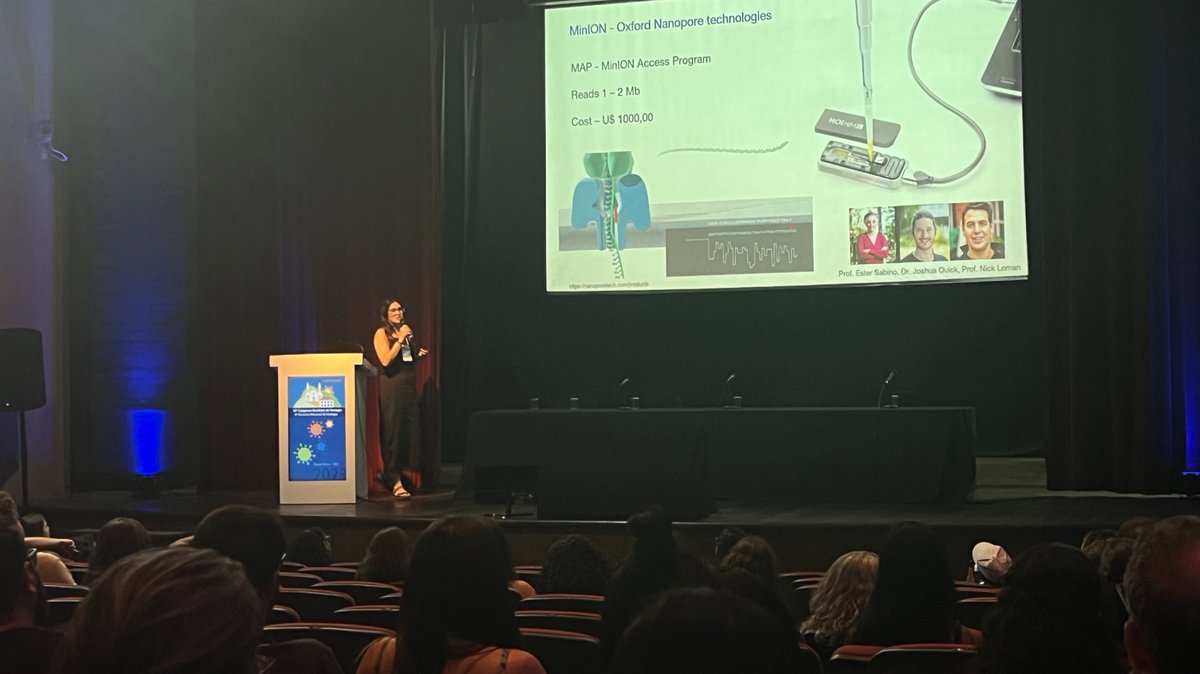
Ingra Morales Claro
@ingraclaro
ID: 738165740885315585
02-06-2016 00:30:01
282 Tweet
356 Followers
258 Following

We wrote this nice metagenomics protocol which does long nanopore reads for RNA/DNA viruses a while ago and can't find anyone to review it, let me know if you have 10 minutes to give it a once over so it can get a proper DOI! wellcomeopenresearch.org/articles/6-241 Ingra Morales Claro Josh Quick


Hear from Ingra Morales Claro & Matthijs Welkers, leaders in the field of infectious disease research, who will share their experiences in developing & implementing fast, accessible pathogen surveillance protocols with #nanopore sequencing: bit.ly/3ga0lB0 #asmngs

OPPORTUNITY: sign up for this Oxford Nanopore webinar with Ingra Morales Claro @caddeproject Imperial College London & Matthijs Welkers on implementing fast accessible viral surveillance with nanopore sequencing 👇 go.technologynetworks.com/surveillance-w…


Amazing team work for our first MinION Mk1C run - Project ONESVEC - PI Rita Sousa, INSA ✨ Great collaboration work 😃 Thanks to Ingra Morales Claro Filipe Romero Nuno R. Faria 🙏🙏🙏 Oxford Nanopore

This week in São Paulo, CADDE Project is back running the ‘Portable metagenomics for pathogen surveillance’ workshop. Students are getting hands-on experience learning rapid protocols and real-time Oxford Nanopore sequencing to characterize viruses with pandemic potential


Participants are learning cutting-edge techniques to identify viral pathogens with real-world samples, such as the untargeted metagenomic ‘Rapid SMART-9N’ method by Ingra Morales Claro & colleagues wellcomeopenresearch.org/articles/6-241


.CADDE Project demonstrating the use of portable genomics for pathogen surveillance (with pandemic potential) to students in Brazil. And another great example of how the #Nanopore Community is enabling the analysis of anything, by anyone, anywhere. #AnythingAnyoneAnywhere


⚠️ No #Ceará, #chikungunya matou mais do que #dengue na última década. Dados do maior estudo epidemiológico sobre o tema mostram que vírus causa surtos explosivos em pequenos bolsões pelo país. Artigo a respeito acaba de ser publicado em The Lancet Microbe. agencia.fapesp.br/41078/


We are delighted to share our study "Spatiotemporal dynamics and recurrence of chikungunya virus in Brazil: an epidemiological study" now published at The Lancet Microbe!🦟🦠🇧🇷 Available: thelancet.com/journals/lanmi…


Excelente reportagem do André Biernath para BBC News Brasil sobre nosso recente estudo de 10 anos da chikungunya no Brasil! Disponível em bbc.com/portuguese/art…

NEW EPISODE #ScienceInContext! This week Sabine L.van Elsland speaks with Nuno R. Faria Imperial College London about their publication The Lancet Microbe on chikungunya in Brazil 👇

NEW PUBLICATION Read the full paper The Lancet Microbe here 👇 William Marciel de Souza Nuno R. Faria Charlie Whittaker Imperial College London LewisBuss Ingra Morales Claro Nilani Chandradeva Darlan Cândido UTMB Health University of Oxford USP - Universidade de São Paulo & others doi.org/10.1016/S2666-…



Apresentação de Ingra Morales Claro na sessão ‘Young Inspiring Researchers’ do congresso da Sociedade Brasileira de Virologia, falando sobre programas de vigilância genômica de vírus como o CADDE Project, ZiBRA Project, entre outros. #CBV2023 🧬


Marcilio J Fumagalli Shirlene Telmos Pierina Parise Darlan Cândido Stefanie Muraro gabe Ingra Morales Claro Daniel Teixeira Mariene Amorim Patricia V Aguilar, PhD Ricardo Khouri Sandra López Vergès Lab of Neuroproteomics UTMB World Reference Center for Emerging Viruses msdiamondlab LEVE - UNICAMP Ester C Sabino Nuno R. Faria


